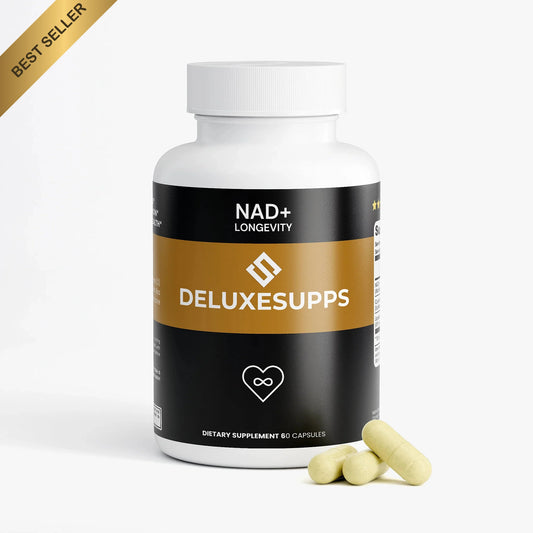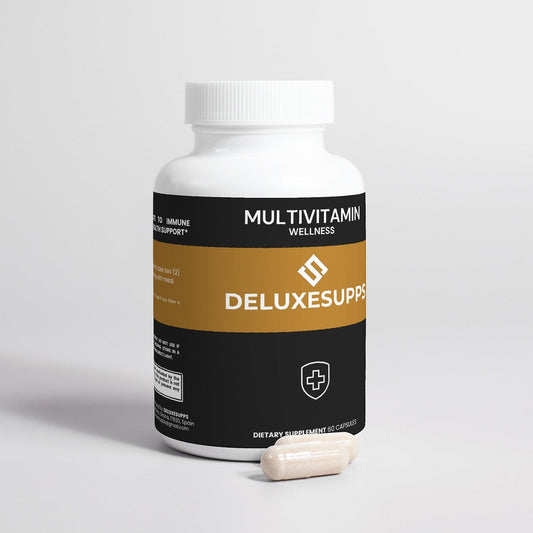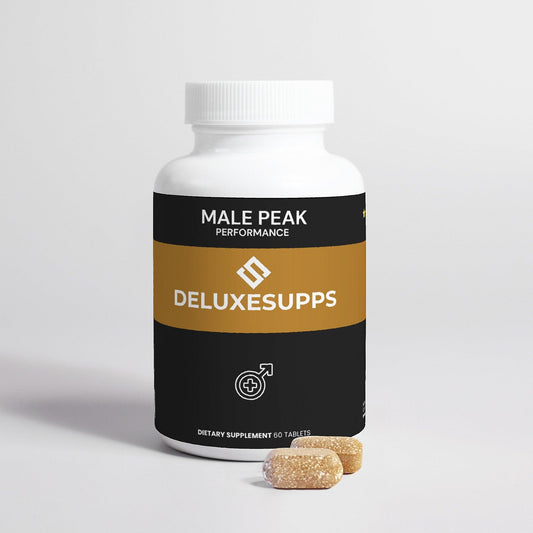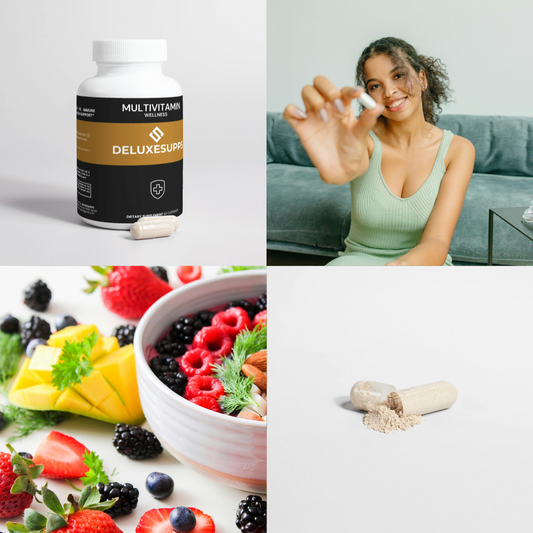Updated on: 2025-11-09
Table of Contents
- 1. Whey Protein Isolate Powder: What It Is and How It Compares
- 2. How to Choose Whey Protein Isolate Powder: Step-by-Step
- 3. When to Use Whey Protein Isolate Powder and How to Store It
- 4. Whey Protein Isolate Powder FAQ
- 5. Closing Thoughts on Whey Protein Isolate Powder
- 6. About the Author: Deluxesupps Deluxesupps
Whey Protein Isolate Powder: What It Is and How It Compares
Whey protein isolate powder (often called WPI powder) is a refined form of whey that is processed to increase protein content and reduce carbohydrates and fat. In a typical finished product, the dry basis protein percentage is high, and lactose is comparatively low relative to many whey protein concentrate options. This composition appeals to shoppers who want a straightforward protein source with minimal extras. Because the term whey isolate describes a category rather than a single recipe, it is important to evaluate labels, ingredient lists, and third-party quality documentation before you decide which option is suitable for your routine.
WPI Powder vs Whey Protein Concentrate
Whey protein concentrate (WPC) and whey protein isolate share the same dairy origin but differ in processing intensity and resulting macronutrient profile. In general terms, WPI targets higher protein per serving with less residual lactose and fat when compared with many WPC formulations. WPC can offer a creamier taste and mouthfeel and may be priced more competitively. WPI typically emphasizes a leaner, more concentrated protein delivery and a lighter texture. If you prefer a product with a higher protein-to-gram ratio and reduced lactose content, isolate formats are commonly positioned for that use case. If you prioritize a richer mouthfeel or broader flavor flexibility and seek a cost-efficient option, concentrate formats may be attractive.
Where Hydrolyzed Whey Protein Fits
Hydrolyzed whey protein refers to whey that has been processed into shorter peptide fragments. This format is often created to support rapid mixing and consistency. Hydrolyzed variants may taste slightly bitter due to the peptide profile and are often priced at a premium. Some shoppers alternate between hydrolyzed whey protein and whey protein isolate powder to balance taste, texture, budget considerations, and how quickly the powder mixes into water or other beverages.
Grass-Fed Whey Protein Isolate Powder Sourcing
Many shoppers seek grass-fed whey protein isolate powder for sourcing transparency. Grass-fed language generally relates to dairy feed practices. If such attributes matter to you, verify whether the brand clearly states the origin of the whey, herd management standards, and any independent verification associated with the claim. Review labels or brand resources that specify geographic sourcing, dairy cooperative standards, or certifications. You can also look for clear batch coding, manufacturing location, and quality testing summaries to support an informed choice.
How to Choose Whey Protein Isolate Powder: Step-by-Step
The steps below provide a structured way to evaluate and select an option that matches your preferences, budget, and routine.
- 1. Define your priority. Decide whether your top priority is higher protein per serving, minimal lactose, certain flavor profiles, or budget efficiency. Shoppers searching phrases like “best whey protein isolate powder for muscle gain” often compare protein-per-serving, ingredient simplicity, and batch testing transparency.
- 2. Check the protein percentage. Examine the nutrition panel to confirm grams of protein per serving and the serving size. Compare protein density across brands to understand value per scoop and per 100 grams.
- 3. Read the ingredient list carefully. A typical whey protein isolate powder lists the protein source first, followed by flavoring, sweeteners, or emulsifiers. If you prefer minimal formulations, choose short ingredient lists and familiar components.
- 4. Verify testing and quality documents. Look for references to third-party assessments, contaminant screening, or certificates of analysis. Brands that share batch-level quality information demonstrate added transparency.
- 5. Compare WPI, WPC, and hydrolyzed formats. Evaluate how WPI differs from whey protein concentrate and hydrolyzed whey protein on protein density, lactose content, solubility, taste, and price. Balance these factors with your preferences.
- 6. Evaluate flavoring and sweeteners. Consider whether you prefer unflavored, naturally sweetened, or artificially sweetened options. If you rotate flavors, choose mainstream profiles with consistent supply and predictable taste.
- 7. Consider source and supply transparency. If grass-fed or regional sourcing matters to you, look for documented origin details, dairy standards, and clear chain-of-custody information.
- 8. Assess mixability and texture. Review product pages for mixability descriptions and preparation tips. Many isolates mix well with water, milk alternatives, or in recipes. If possible, start with a smaller size to assess texture in your typical beverage.
- 9. Calculate cost per serving and per gram of protein. Instead of comparing only tub prices, divide total protein grams by the price to estimate cost efficiency.
- 10. Plan storage and portability. If you travel or commute, consider resealable pouches, single-serve sticks, or tubs that fit your storage space. Proper storage can help maintain freshness and flavor.
- 11. Align with your routine. Choose a flavor and format that you will use consistently. Routine fit often matters more than small label differences between similar products.
- 12. Reassess periodically. Revisit your choice as your schedule, taste preferences, or budget change. Keep notes on flavor, mixability, and overall experience to guide future purchases.
For additional resources, explore the store and editorial updates from Deluxesupps. You can review product availability and current insights here: Deluxesupps, All products, Blog, and Contact.
When to Use Whey Protein Isolate Powder and How to Store It
Many people prefer whey protein isolate powder because it offers a streamlined ingredient panel and a high protein-to-calorie ratio compared with broader blends. Timing and storage do not change the core composition, but these practical considerations can influence ease of use and overall satisfaction.
Typical Timing Patterns for Whey Protein Isolate Powder
Planned intake often follows personal schedule and meal planning. Common patterns include preparing a shake after exercise for convenience, using a serving between meals when access to other protein sources is limited, or incorporating isolate into recipes such as oats or smoothies. If you have specific dietary requirements, consult a qualified professional who can consider your individual circumstances. The longtail question “When should I take whey protein isolate powder for best results?” does not have a single universal answer, because it depends on total daily intake preferences and routine consistency. Many users prioritize a plan they can maintain every day.
Storage and Handling of WPI Powder
Keep the container closed tightly after each use. Store in a cool, dry place away from steam, sinks, and direct sunlight. Use a clean, dry scoop and avoid introducing moisture into the container. If you transfer servings to a travel container, label and date the contents. Check the package for any storage notes from the brand. These simple practices help maintain texture, aroma, and consistency over time.
Whey Protein Isolate Powder FAQ
Is whey protein isolate powder better than concentrate?
“Better” depends on your priorities. Whey protein isolate generally offers higher protein per serving and lower lactose compared with many concentrate products. Whey protein concentrate can deliver a creamier taste and a different price point. If you value lean formulation and a lighter texture, isolate may align with that goal. If you prefer richer flavor and cost flexibility, concentrate is a sound alternative.
When should I take whey protein isolate powder for best results?
There is no universal timing rule. Select times that fit your daily routine, such as after training, between meals, or when traveling. Consistent, planned intake that aligns with your broader dietary pattern is often easier to maintain than strict timing windows. For personalized guidance, consult a qualified professional who understands your needs.
How does hydrolyzed whey protein compare with whey protein isolate powder?
Hydrolyzed whey protein is processed into shorter peptide chains, which can influence taste, price, and mixing behavior. Whey protein isolate emphasizes high protein density and a streamlined macronutrient profile. Your decision can consider flavor preferences, budget, and how you plan to prepare shakes or recipes.
Closing Thoughts on Whey Protein Isolate Powder
Whey protein isolate powder offers a focused, high-protein format with a clean ingredient approach. By comparing isolate with whey protein concentrate and hydrolyzed whey protein, checking labels carefully, reviewing sourcing claims such as grass-fed, and aligning choice with your schedule, you can select a product with confidence. Keep your process simple: define your priority, verify the numbers, and choose a flavor and format you will use consistently. Your best option is the one you can maintain over time.
About the Author: Deluxesupps Deluxesupps
Deluxesupps Deluxesupps is a specialist in nutrition retail and product education, focusing on clear guidance for selecting and using protein powders and related categories. The team reviews labels, sourcing claims, and quality practices to help readers make informed choices. Thank you for reading, and feel free to reach out with questions anytime.
The content in this blog post is intended for general information purposes only. It should not be considered as professional, medical, or legal advice. For specific guidance related to your situation, please consult a qualified professional. The store does not assume responsibility for any decisions made based on this information.












